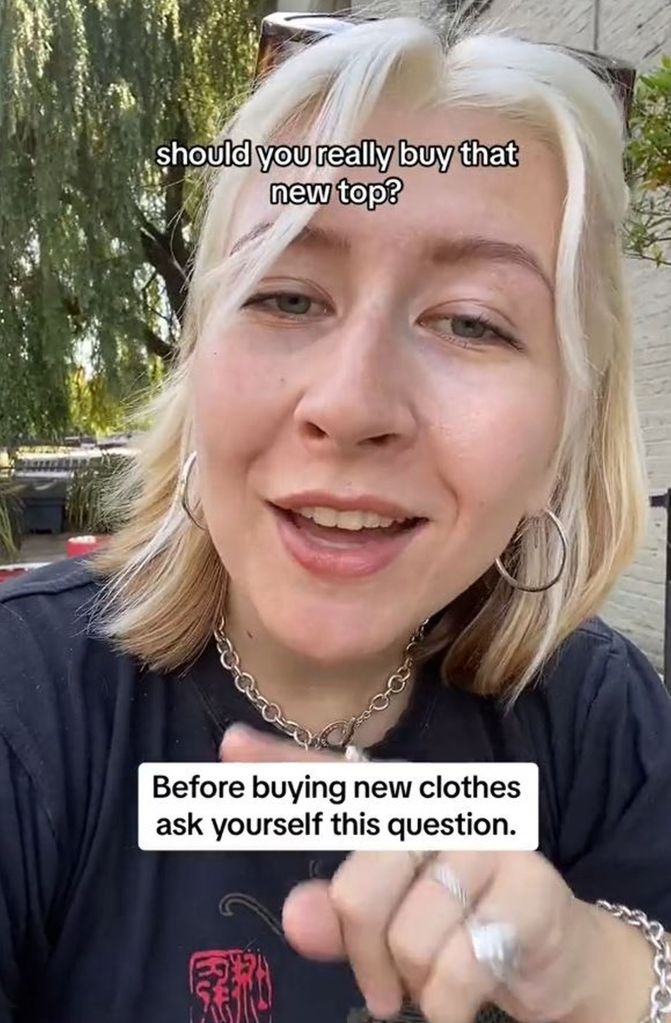I’m a recovered fast-fashion addict, now I save $360 a month thrifting — here’s how
A self-proclaimed recovered fast-fashion addict has turned to thrifting to save money — and the planet.
Lottie Lashley, 25, used shopping as a coping mechanism to help her settle into her first year of university.
The former shopaholic from London spent her downtime scrolling through fast-fashion websites, spending about $120 a month.
“I would say it was an addiction to fast fashion,” Lashley to Kennedy News. “Seeing it, and needing to have it.”
That was until about five years ago when she claimed she “realized how un-environmental” and “unethical” the fast-fashion industry is.
Since that light-bulb moment, Lashley has switched to shopping almost exclusively at thrift shops, which has saved both her conscience and her wallet.
She claimed that she buys more clothing and, in doing so, actually saves about $360 a month — which is what she would have spent if she were to buy the same number of frocks from non-charity stores.
“I take it to a kind of extreme, but it’s just having the thought of ‘we don’t need to mindlessly consume,’ ” she said.
“If I do buy stuff consciously, I need to know I’m going to wear them again and again.”
Fast fashion refers to clothing items that are quickly and inexpensively produced to get trendy garments into consumers’ closets shortly after they hit the catwalk.
The fashion industry as a whole is the second-biggest consumer of water and is responsible for 2% to 8% of global carbon emissions, according to the United Nations, which reported that in 2019 the fashion industry was valued at around $2.4 trillion and employed more than 75 million people worldwide — many of whom are suspected to work in unfavorable conditions.
And fast-fashion manufacturers like Shein only make the issues worse, according to Lashley.
Shein, which has become one of the leading fast-fashion brands and a constant point of attack for Lashley’s social media content, rocketed to the top of the digital fashion retailer list during the pandemic and recorded a whopping $22.7 billion in sales and $700 million in profits in 2022.
However, Shein has gained notoriety for producing its items in factory conditions alleged to be abusive — especially after a series of TikTok videos showing clothing tags stitched with “help me” and “need your help” went viral.
Additionally, Shein’s 2021 Sustainability and Social Impact Report cited “frequent violations” throughout the supply chain after 700 suppliers were audited.
However, a Shein spokesperson told Kennedy News that the company “is committed to managing our supply chain responsibly and providing a safe work environment for all our suppliers’ employees,” adding that suppliers must follow a company code of conduct, which “ensures workers at our suppliers’ facilities are paid fairly.”
“We pay manufacturing suppliers competitive rates so they can support their workers,” they continued in the statement. “If they violate our SRS standards on issues like unethical labor practices or poor working conditions, we take swift action, including termination if a serious violation isn’t corrected.”
Lashley, though, was steadfast in her criticism and her own desire to shop better.
“The fact that the garment workers at [factories that supplied to] Shein were said to be sometimes getting paid [cents on the dollar] per garment, I’m so happy to question people on why they support Shein. Then you have other fast fashion companies with staff working up to 18-hour days, seven days a week, in inhumane conditions,” Lashley claimed.
“I get people saying all brands are just as bad as Shein, and they miss the point that they are all terrible. I’m not just having a go at Shein,” Lashley said.
The last time she “consciously consumed” a new addition to her wardrobe was a year ago when she bought a pair of trousers, but 80% of her closet is now second-hand clothing, she claimed.
The Gen Zer now uses her thrifting expertise and social media savvy to encourage others to shop second-hand and shares her shopping tips — and she’s not the only one.
On TikTok, the hashtag #thrifting has 10.7 billion views, and Instagram’s 2023 trends report claimed that Gen Z consumers are more “frugal and thrifty,” as many cite “climate concerns” as a major factor in opting for “DIY clothing” and “thrifting.”
“Our own consumption shouldn’t impact other people’s lives,” Lashley insisted.
“No matter where you’re getting your clothes from, you’ve got to look into it and see where they’re getting their clothes from on the other end.”















